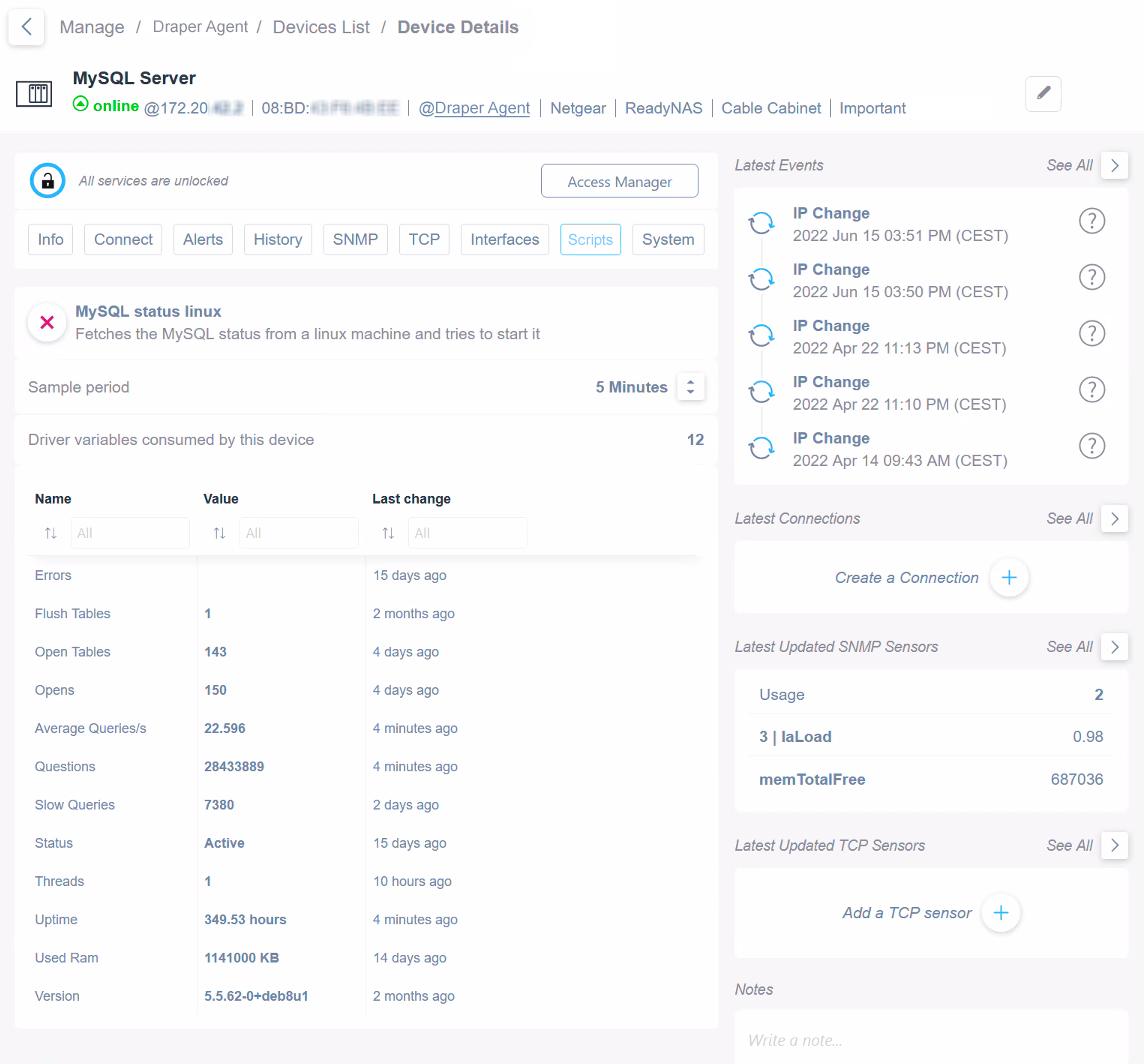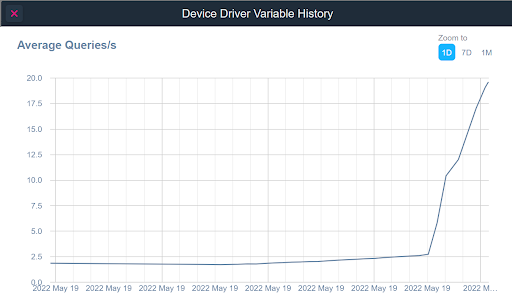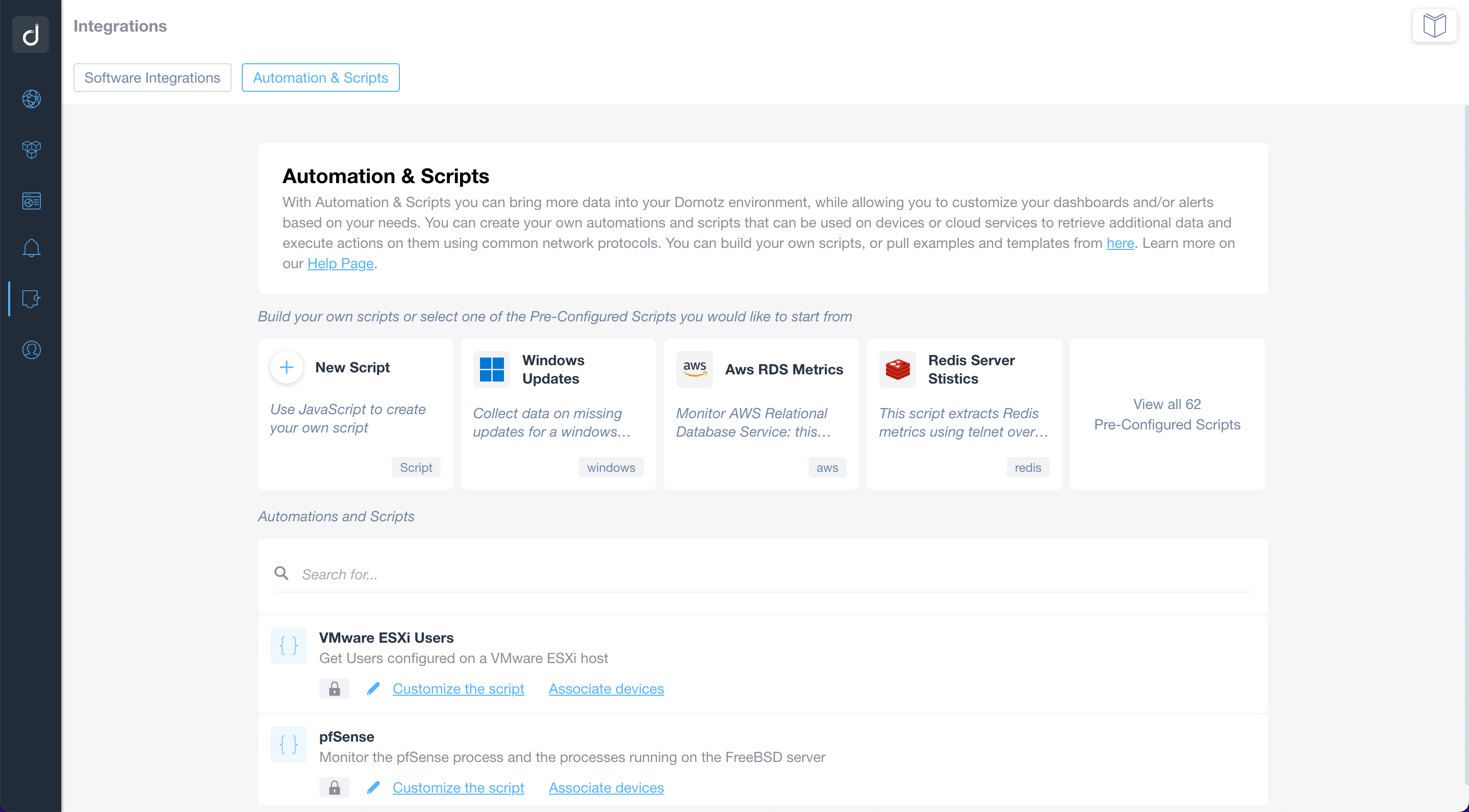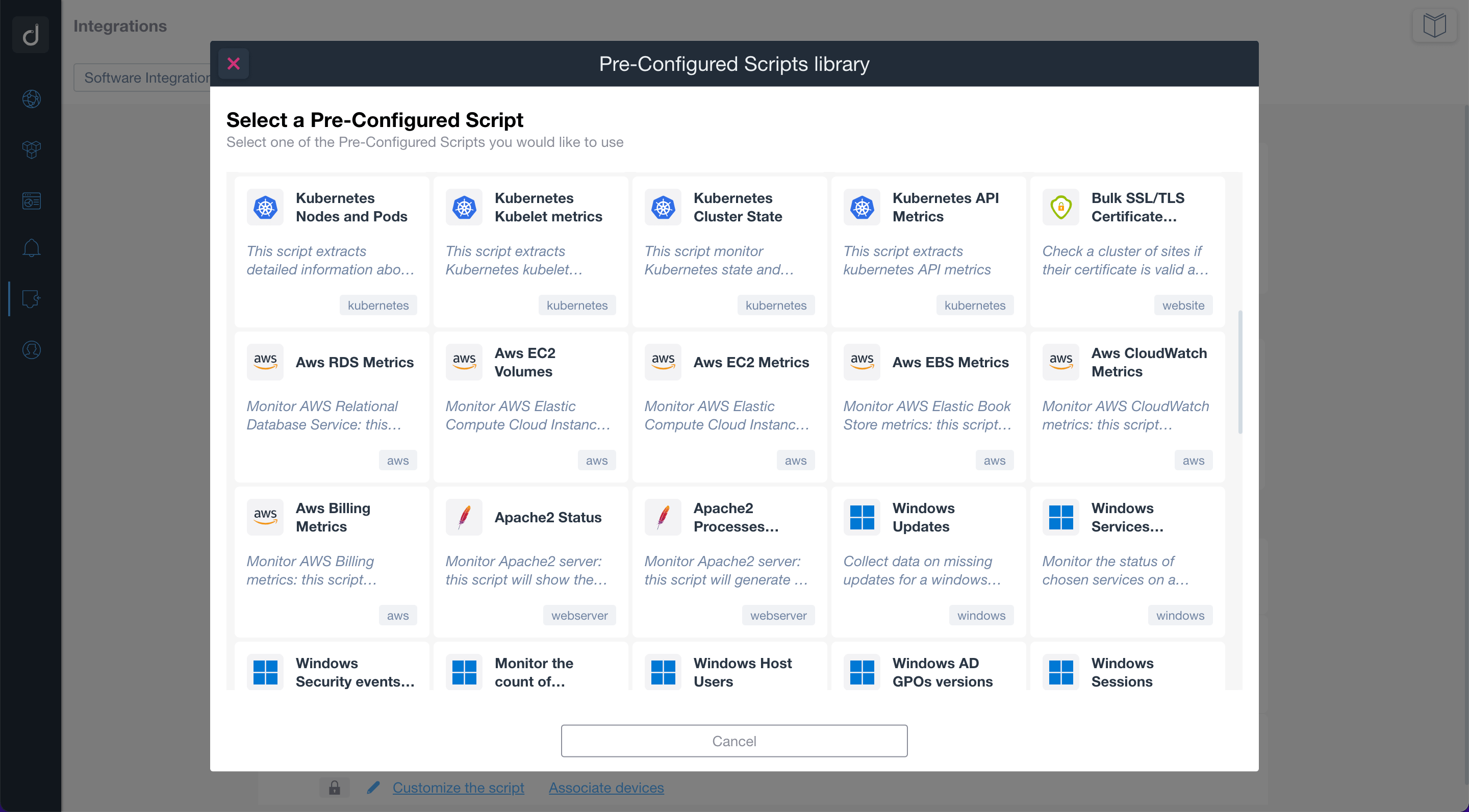MySQL Server Monitoring
Proactively monitor MySQL, the most popular Open Source Relational Database Management System, with Domotz.
Use our custom scripts to proactively monitor your MySQL server hosted from a Linux machine. You can monitor your MySQL status and related metrics.
There are two custom scripts for extracting information from a MySQL Server:
You can find the MySQL ready-to-use scripts in our examples library. Just use the scripts as they are, or customize them to fit your needs.

How to monitor MySQL key metrics

Proactively monitor your MySQL instance running on a Linux server.
Our drivers enable you to:
- Monitor the MySQL service status and version
- Keep track of the service’s memory usage
- Record key metrics, including average queries per second served, slow queries, uptime, etc.
Device driver variable history


With our MySQL Server Monitoring you can:
- Check the history of a specific variable (like “used RAM”)
- Identify significant changes and make proactive decisions
- Get a historical view of data. Choose to filter the data by 1 day, 7 days or up to 1 month
Full network visibility with ready-to-use scripts


Use the pre-configured scripts to monitor and manage network-connected devices, cloud services, and web applications. By using standard network protocols, the scripts will allow you to retrieve valuable data and execute actions on the monitored devices and services.
Build or customize scripts according to your network monitoring needs.
Additionally, you can apply customized alerts on scripts to be notified when a specific event occurs.
Additional Resources:
Ready to Get Started?
- Uncover Network Blind Spots
- Resolve Issues Faster and Easier
- Exceed Service Delivery Expectations